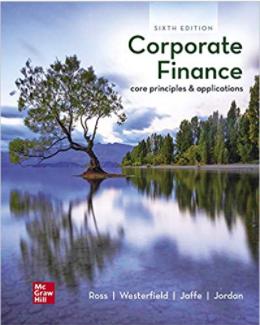Masters Real Estate, Inc., a construction firm financed by both debt and equity, is undertaking a new
Question:
Masters Real Estate, Inc., a construction firm financed by both debt and equity, is undertaking a new project. If the project is successful, the value of the firm in one year will be $110 million, but if the project is a failure, the firm will only be worth $70 million. The company’s current value is $96 million, a figure that includes the prospects for the new project. The company has outstanding zero coupon bonds due in one year with a face value of $89 million. Treasury bills that mature in one year yield an EAR of 7 percent. The company pays no dividends.
a. Use the two-state option pricing model to calculate the current value of the company’s debt and equity.
b. Suppose the company has 300,000 shares of common stock outstanding. What is the price per share of the firm’s equity?
c. Compare the market value of the company’s debt to the present value of an equal amount of debt that is riskless with one year until maturity. Is the firm’s debt worth more than, less than, or the same as the riskless debt? Does this make sense? What factors might cause these two values to be different?
d. Suppose that in place of the project described above, the company’s management decides to undertake a project that is even more risky. The value of the firm will either increase to $125 million or decrease to $60 million by the end of the year. Surprisingly, management concludes that the value of the company today will remain at exactly $96 million if this risky project is substituted for the less risky one. Use the two-state option pricing model to determine the value of the firm’s debt and equity if the firm plans on undertaking this new project. What is the stock price if the firm undertakes this project? Which project do bondholders prefer?
Step by Step Answer:

Corporate Finance Core Principles And Applications
ISBN: 9781260571127
6th Edition
Authors: Stephen Ross, Randolph Westerfield, Jeffrey Jaffe, Bradford Jordan





